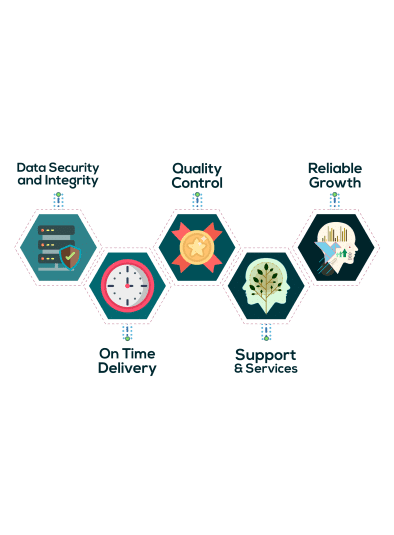
9 Ways Professionals Can Stay Ahead in the Battle Against Cybercrime
The digital age has brought incredible advancements, but it has also created new challenges for individuals and organizations. As technology evolves, so do the tactics of malicious attackers looking to exploit vulnerabilities. Staying ahead of these threats is essential for professionals working to protect sensitive data, financial assets, and critical systems.
To combat these dangers effectively, professionals must remain vigilant, continually update their skills, and adopt proactive strategies. This article outlines actionable ways to help individuals and organizations stay prepared and secure in the face of increasing digital threats.
Understand the Ever-Changing Landscape of Cyber Threats
One of the most critical steps in staying secure is understanding the nature of the threats that exist. Attacks evolve constantly, with new methods emerging regularly. Professionals need to stay informed about these trends through industry news, research, and threat intelligence reports. Knowing what to look out for helps organizations anticipate risks and implement effective defenses. Threats such as phishing scams, ransomware attacks, and data breaches are just a few examples that highlight the importance of staying informed. By keeping up with these changes, professionals can better protect systems and respond quickly to emerging risks.
Advance Your Expertise
Advancing your expertise in cybersecurity is essential for tackling today’s complex digital threats. Building a strong foundation in topics like network security, ethical hacking, and risk management prepares professionals to address vulnerabilities effectively. For those seeking deeper knowledge, a master’s in cyber security online program can provide specialized skills and leadership opportunities. This program offers a flexible and effective way to gain in-depth knowledge and practical skills. It covers topics like network defense, ethical hacking, and risk management, equipping students to address complex problems confidently.
Online programs are especially beneficial for working professionals who need to balance their studies with their careers. They provide access to expert instructors, interactive coursework, and networking opportunities. With a master’s degree, individuals position themselves as leaders in the field, capable of managing threats and guiding organizations toward better protection.
Build a Strong Foundation in Cybersecurity Principles
Before tackling advanced threats, it’s essential to master the basics. Foundational concepts like encryption, firewalls, and multi-factor authentication are the backbone of security strategies. These tools and techniques help create secure systems that are harder for malicious actors to penetrate. Professionals should also focus on understanding how different technologies interact, as this knowledge is vital for identifying weak points and preventing unauthorized access. A strong foundation allows for the development of more sophisticated defenses, ensuring a higher level of protection.
Leverage Advanced Technology to Combat Threats
Technology is a powerful ally in the fight against malicious activity. Advanced tools like artificial intelligence, machine learning, and blockchain solutions help organizations detect and prevent breaches more efficiently. For example, AI-driven systems can identify suspicious behavior in real-time, giving security teams the opportunity to act swiftly. Staying updated on emerging technologies ensures that professionals are equipped with the most effective tools. These innovations make it possible to secure systems and data more effectively, ultimately reducing the risk of compromise.
Develop Incident Response Plans for Quick Recovery
Incidents can still occur no matter how strong a system’s defenses are. Having a well-prepared incident response plan is critical to minimizing the damage caused by breaches or other attacks. A strong plan outlines the steps to take immediately after an incident is detected, including containment, eradication of the threat, and recovery of affected systems. Incident response plans should be tailored to an organization’s specific needs and include team members’ roles and responsibilities. Regularly testing these plans through simulations or drills ensures that everyone knows how to act quickly and effectively during a real event. Being prepared significantly reduces downtime and the potential impact on operations.
Collaborate with Other Professionals and Organizations
Security is a team effort, and collaboration is key to staying ahead of threats. Professionals can benefit from sharing knowledge, resources, and best practices with peers within and outside their organizations. Industry forums, conferences, and online communities provide opportunities to exchange ideas and stay informed about emerging threats. Collaboration also extends to partnerships with specialized agencies or vendors who can provide additional expertise or advanced tools. Building strong networks within the field ensures access to valuable insights and resources that can strengthen overall security efforts.
Focus on Data Protection and Privacy Regulations
Protecting sensitive data is one of the most important responsibilities of security professionals. Compliance with regulations like the California Consumer Privacy Act (CCPA) is a legal requirement and key to building trust with clients and users. Professionals must understand these laws and implement measures to safeguard data, such as encryption, secure storage solutions, and access controls. Regular audits and training sessions can help ensure that teams stay compliant and prepared for any changes in regulatory requirements.
Conduct Regular Risk Assessments and Security Audits
Proactively identifying vulnerabilities is an essential part of staying secure. Security audits and risk assessments allow professionals to evaluate the effectiveness of current defenses and uncover weak points before any chance of exploitation arises. These assessments should cover all aspects of an organization’s infrastructure, from software and hardware to policies and procedures. Regularly reviewing and updating security measures ensures that defenses remain robust against evolving threats. Incorporating employee feedback during these audits can also provide valuable insights into potential areas for improvement.
Stay Ahead by Anticipating Future Threats
The digital security landscape is constantly changing, and professionals must look ahead to prepare for new challenges. For example, emerging technologies like quantum computing can potentially disrupt current encryption methods. Staying informed about these developments enables professionals to adapt strategies and explore solutions before risks materialize. Attending industry conferences, participating in advanced training programs, and staying engaged with research and innovation are all ways to remain proactive. Preparing for the future ensures that organizations can effectively handle the next wave of challenges.
Staying ahead in the battle against digital threats requires a combination of knowledge, preparation, and collaboration. From developing incident response plans and leveraging advanced technology to complying with data protection laws and conducting regular audits, every strategy contributes to a stronger defense. Taking these steps ensures not only the safety of systems and data but also organizations’ long-term success and resilience in the face of digital threats.



